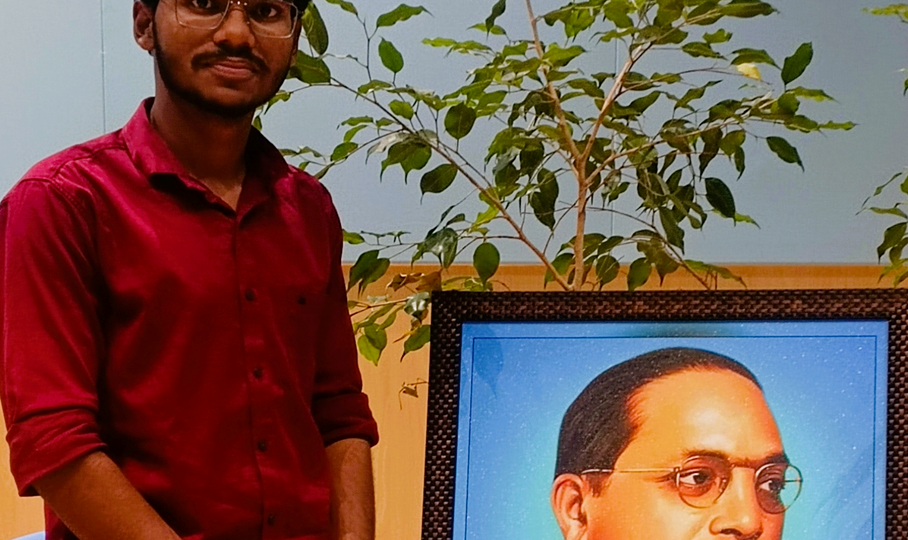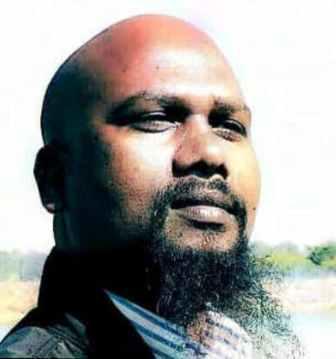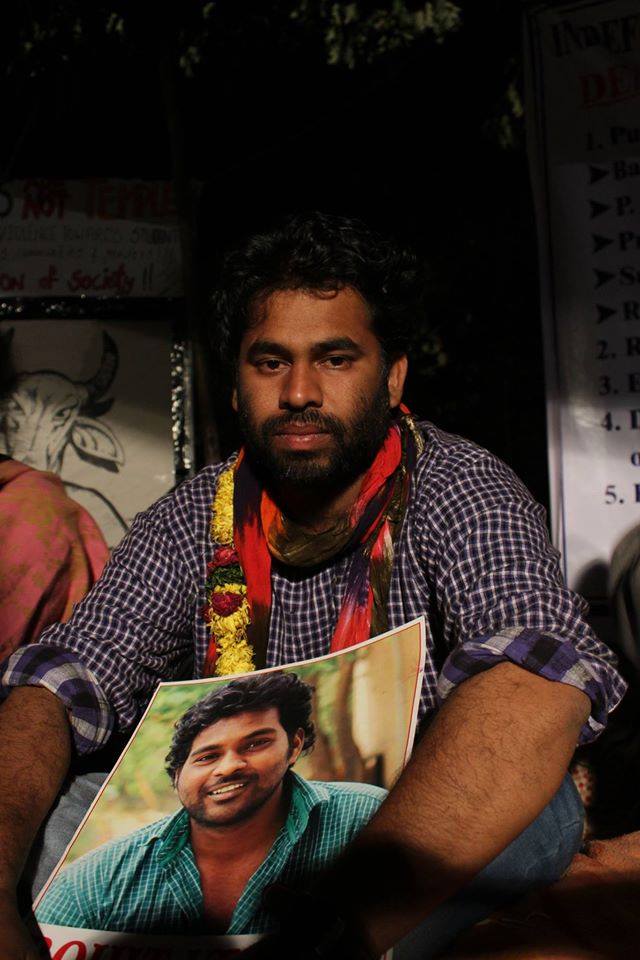Ankush Uttam Helode
Gail Omvedt has described it as the ‘Problem of Entry’. What she means by ‘Problem of Entry’ is basically ‘getting jobs and getting land’ in the case of the workers and the peasants, respectively [Omvedt 1994]. It was this that concerned Dr. B.R. Ambedkar more than anything else. Consequently, he showed the basic problem of the Untouchables being excluded from higher-paying jobs. Post-independence India had a history in which the doors of the few institutions were only open to the upper strata of Indian society; it was acceptable as dictated by the law of Manu. This law paved the way for them to gain admission to any institutions in post-independence India. During that time, many Dalit-Bahujan intellectual leaders worked hard to remove the barriers that prevented Dalits from entering institutions after independence.
Dr. B. R. Ambedkar addressed the issue of reservation in the Constituent Assembly in order to protect the rights of the socially and educationally backward classes and to integrate all segments of society into the national mainstream. Dr. Ambedkar’s main intellectual argument was that Dalits are not considered a part of this country and have no one to truly represent them. The nation and nationalism of Congress and Gandhi were problematic for him because words like society, nation, and country are merely amorphous [Aditya Nigam EPW]. The Untouchables were not included in the idea of nation-building, but as chairman of the Drafting Committee and intellectual representative of the Depressed Classes, he put forward the idea of reservation for Scheduled Caste and Scheduled Tribe in the Constituent Assembly and was successful in acquiring the same. Reservation is one method of incorporating Scheduled Caste and Scheduled Tribe into the overall idea of a nation. They can raise their ‘social status’ in the Indian society if they receive historical compensation. For the Dalits, Indian history has been one-sided oppression. As compensation for oppression and exclusion, the independent Indian state must remove visible and invisible caste barriers from Dalit paths in order to make them part of that whole national community.
Even though all constitutional rights are present in contemporary India, dubbed ‘New India’, forms of discrimination against Dalits and Adivasis persist. There is democracy, but modern visible and non-visible institutional discrimination has played a significant role in the name of efficiency and meritocracy. Here, I’m going to mention a few Indian democratic institutions, including the third pillar of our democracy—the Hon’ble Supreme Court of India—as well as the Cabinet Secretary and National Security Advisor of India, to illustrate how upper caste supremacy remains intact in the name of Brahmin merit.
Manusmriti is a sacrosanct scripture of upper-caste Hindus. It is the source of the Brahmins’ authority to advise the king. The same thing is happening here in the name of merit.
The position of National Security Advisor (NSA) was established in 1998, when the government was led by Atal Bihari Vajpayee. NSA is a very powerful office in the Government of India. NSA is the chief advisor to the Prime Minister on national security and international affairs. Since 1998, we have had five NSAs. The first was Brajesh Mishra, son of Dwarka Prasad Mishra, former Chief Minister of Madhya Pradesh in the Indian Congress Party-led government. The second was Jyotindra Nath Dixit. The third was M. K. Narayanan (Nair), the fourth was Shivshankar Menon from Kerala (Nair), and the current NAS is Ajit Doval who comes from a Brahmin family. So, all of them NSA are Brahmin-Savarnas.
Since independence, 32 Cabinet Secretaries have served the country. More than 20 of them were solely from the Brahmin community, while others were from non-Brahmin upper caste backgrounds. It is evident that upper castes have historically been socially, culturally, and economically privileged strata of the community. These upper castes obtain higher seats in public and private spaces as a result of this privilege. This historical background plays a big role in the supremacy of Brahmin and non-Brahmin upper castes in the present democratic state. However, these countrymen continue to enjoy the benefits of their positions and have systematically excluded Dalits, Adivasis, and Bahujans from institutions where there are no reservations. The question then becomes, on what basis should reservation be provided— on account of economic oppression or historical oppression? Upper castes use their privileged position to capture every seat of power and authority in institutions where the formal reservation system is not in place. This is known as the operation of ‘Hidden Reservations’. Today, we need to strengthen the formal reservation system and introduce reservations at all levels of entry, always based on social operations.
When we look at the representation of Brahmins in the Supreme Court of India, we can see the essence of Manusmriti in the Indian judiciary. Namit Saxena conducted research on caste-based representation in higher judiciary and discovered that 16 of the 50 Chief Justices of India to date have been Brahmins, bringing the percentage of Brahmin Chief Justices to around 30%. Until 1980, there was no judge from the OBC or SC communities. In the name of efficiency and merit, 11 of the Supreme Court’s 27 sitting judges are Brahmins, 4 vaishyas (a few Jain), 3 Khatris, 2 Kayastha, and 1 Parsi.
This is how the upper castes use social privilege to gain access to democratic institutions. There is no scientific evidence that they have merit while Dalits don’t. In the recent judgment on the EWS reservation, Hon’ble Judge Pardiwala stated, “The idea of Babasaheb Ambedkar was to bring social harmony by introducing reservation for only ten years. However, it has continued for the past seven decades. Reservation should not continue for an indefinite period of time so as to become a vested interest.” This was the argument of Justice Pardiwala during the EWS reservation judgment. Dr. Ambedkar’s comment on ten years reservation was regarding political reservation and not about reservations in education and employment. Where is the merit and efficiency of a Supreme Court Judge if he makes such misleading comments? The appointment of the higher judges is based on the collegium system. According to the report of the National Commission for Scheduled Castes on Reservation in Judiciary Report, the collegium system is highly discriminatory on the basis of caste. Some points are highlighted in the report: the collegium is an extra-constitutional authority, and an examination of appointments made over the last six decades reveals that the appointment revolves around only a few families, even among the privileged section of society, who account for less than 1% of the country’s population. Furthermore, the report demonstrates that vested interests are preventing judges from the weaker sections from entering the Supreme Court through a variety of means, thereby preventing the country from undergoing social transformation. This was an important point put forth by the report. Thus, if we want to see a person of lower strata in the higher judiciary, the State needs to introduce reservation in the judiciary.
From the above argument, it is easy to understand how the Manusmruti is still practised. If Dalits and Adivasis are still barred from participating in any democratic institution in modern India, what civilization do these upper caste citizens talk about? We Dalits face daily ‘problems of entry’ in your so-called civil society; if our child touches your drinking water pot, he is brutally killed. If our young sister enters your temple, we are asked to pay a fine. That is why Dr. Ambedkar’s argument remains valid: Dalits are not a part of any whole and cannot be represented.
~
References
- Aditya Nigam. (n.d.). Secularism, Modernity, Nation, Epistemology of the Dalit Critique. EPW.
- Namit Saxena – https://www.barandbench.com/columns/disproportionate-representation-supreme-court-caste-and-religion-of-judges
- EWS; JUDGMENT J.B. PARDIWALA, J. Page No.117
- Constituent Assembly Debates on Reservations – https://prepp.in/news/e-492-constituent-assembly-debates-on-reservations-important-summaries-indian-polity-notes/
- Report by the National Commission for Scheduled Castes on Reservation in Judiciary
- Kulbeli- https://www.kulbeli.com/post/post/21
~~~
Ankush Uttam Helode did his B.A Political Science from Garware College, Pune. Now he is pursuing Master of Arts in Public Policy and Governance from Azim Premji University, Bangalore.










